Loan syndication is an alternative loan arrangement in which the lenders pool their loan portfolios into one large loan. These lenders share the risk and rewards of the loan. This structure helps individual lenders provide large loans while limiting their credit exposure. Individual lenders are still involved in the syndicated loan process, but the loans are generally much larger than they would be if they were lending on their own.
Syndication
Syndication of loans is a type of loan where two or more lenders come together to make a loan for a single borrower. This allows the lenders to share the risk and the loan amount. The process allows for large loan amounts while maintaining prudent credit exposure. It is often used in small-business financing.
The retail market for syndicated loans is dominated by banks, finance companies, and institutional investors. Compared to Europe, the balance of power between these groups is different in the U.S. Syndicated loans are heavily dependent on credit quality and institutional investor appetite. Banks continue to dominate the market, though institutions have become significant players over the last decade.
The loan syndication process is generally structured in three phases. First, the borrower submits a loan request to a lead bank, which then seeks out other financial institutions to participate in the loan syndication process. Throughout the process, the lead institution conducts an appraisal of the loan application and develops a credit proposal for the borrower.
Syndicated loans are large loans made to borrowers by several banks. Typically, one bank is the lead bank, which takes a percentage of the loan and syndicates the rest to other banks. These loans are similar to participation loans, except they involve more than two banks.
Syndicated loans
Syndicated loans are loans arranged and structured by a group of lenders. A lead arranger is responsible for administering the loan. These lenders provide the money to the borrower. There are many types of syndicated loans. The main difference between a syndicated loan and a traditional bank loan is its structure.
Syndicated loans are structured as credit lines or as fixed amounts. Their interest rates are fixed or tied to an industry standard. This type of loan is a good choice for large borrowers who need large amounts of money for projects or mergers. Syndicated loans also help large borrowers maintain a positive market image. This helps the borrowers improve their credit scores, which means they can access larger amounts of credit in the future.
Syndicated loans are made between different financial institutions, and lenders can take an interest in one or both tranches. The lenders of syndicated loans get to know each other and become more familiar with each other’s business. This gives borrowers a larger pool of lenders to choose from. These lenders will work with the borrower to negotiate the terms of the loan.
A lead bank acts as an agent between the lender and the borrower. It holds the authority to oversee the loan and communicate with all the lenders. It also has responsibilities for managing the loan, including ensuring compliance with contractual obligations and overseeing any breach of contract.
Syndication agreement
A syndication agreement for loan syndication is an agreement that binds all parties to share the risk and rewards associated with loan syndication. These agreements are typically negotiated through a syndication process, in which the lead bank identifies participants who pool their funds to provide funds for a borrower’s loan application. Once the loan is approved, the lead bank disburses the loan, sharing the proceeds of the loan with the participants in a set ratio.
Syndicated loans are designed to reduce the risk associated with lending, spreading it among several institutional investors and financial institutions. This reduces the risk associated with default and allows for more favorable lending terms. While there are many advantages to loan syndication, there are several aspects to be considered before entering into a syndicated agreement.
First, a loan syndication agreement must specify the terms and conditions for each party. In some cases, this can be complicated. It may include market-flex contractual language, allowing for shifts in pricing depending on investor demand. This type of language is now standard in syndicated loan commitment letters.
Syndication banks
Syndications are often used for large loans, and the banks that participate in them can share the risks. The banks in the syndicate are each responsible for a certain portion of the loan, and they can all manage the loan from a single point of contact. Syndications can also benefit the borrower by reducing the amount of paperwork and time spent on negotiations.
The loan agreement in a syndicated loan facility is for a single loan, with each lender having a fixed amount of liability, typically a portion of the loan interest. While the loan agreement terms are typically uniform across the lenders, collateral requirements may differ. The main purpose of a syndicated bank facility is to spread the risk of default among a number of lenders, allowing individual lenders to provide large loans while maintaining manageable credit exposure. Syndicated loans are commonly used to fund mergers and acquisitions, large corporate takeovers, and capital expenditure projects.
Syndication loans are a type of private lending that combines various types of loans and other types of lending. Syndications are created when several lenders pool their funds to provide financing for a specific project. Each participant contributes a percentage of the total loan amount, assuming the risk of the entire loan. The lenders work together to reach an agreement on the repayment terms of the loan.










